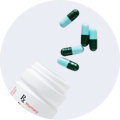To ensure that your organic chemistry products meet international standards, you need to comply with various certifications and regulations. Here are some key steps and certifications to consider:
1. Understand Key International Certifications
Several globally recognized certifications can help ensure your products meet international organic standards:
- USDA Organic (United States): Requires products to be produced without synthetic fertilizers, genetic engineering, radiation, or certain pesticides. Products must contain a minimum of 95% organic ingredients.
- EU Organic (European Union): The “Euro-leaf” logo signifies compliance with EU organic farming standards, including restrictions on pesticides, fertilizers, and GMOs.
- JAS Organic (Japan): Ensures products are free from certain synthetic chemicals and GMOs, with rigorous inspection processes.
- NASAA Certified Organic (Australia): Covers organic and biodynamic products, ensuring they are free from synthetic chemicals, GMOs, and irradiation.
- India Organic (India): Ensures compliance with India’s organic production standards, covering crop production, processing, and labeling.
- BioSuisse (Switzerland): Known for stringent standards, often more rigorous than EU regulations.
- Soil Association (United Kingdom): Sets high standards for animal welfare, environmental protection, and avoidance of synthetic chemicals.
- Ecocert (France): A leading certification body that ensures products meet organic standards.
2. Comply with Specific Regulations
Depending on the market you are targeting, you need to comply with specific regulations:
- USDA Organic Regulations (7 CFR Part 205): Prohibits the use of volatile synthetic solvents and certain synthetic processing aids, unless specified. It also outlines specific requirements for pest management, preventing contamination, and using approved substances.
- EU Organic Regulations (EC) No 834/2007 and (EC) No 889/2008: These regulations cover the production, labeling, and control of organic products, including restrictions on the use of synthetic pesticides, fertilizers, and GMOs.
- JAS Organic Standards: Similar to EU regulations, JAS has a closed list of allowed substances, and any substances not listed are prohibited.
3. Follow Best Practices for Organic Production
- Prevent Contamination: Ensure organic products are not mixed with non-organic products and are protected from contact with prohibited substances.
- Use Approved Inputs: Only use substances and materials that are approved for organic production. For example, certain disinfectants, pesticides, and fertilizers are allowed under specific conditions.
- Maintain Records: Keep detailed records of all inputs, processes, and testing to demonstrate compliance during audits.
4. Engage with Certification Bodies
- Choose a Certification Body: Organizations like SCS Global Services offer organic certification services, including on-site audits, testing, and issuing Certificates of Compliance.
- Annual Audits: To maintain certification, annual audits are required to ensure ongoing compliance.
- Transition Period: If you are transitioning to organic production, be aware of the mandatory transition period (usually three years) during which you can market your products as pesticide residue-free.
5. Quality Management Systems
Ensure your production processes are ISO 9001 certified, which demonstrates a commitment to quality and consistency. For example, CPAChem’s organic solutions are produced under an ISO 9001-certified quality system.
By following these steps and obtaining the relevant certifications, you can ensure that your organic chemistry products meet international standards and are recognized in global markets.
